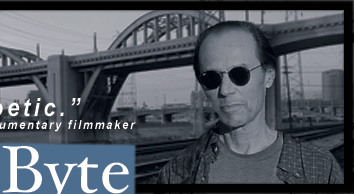
 |
LSD and the Flaw in the Fabric
Researchers from the Department of Psychiatry, Psychotherapy and Psychosomatics at Zurich University recently discovered that LSD changes a person’s sense of meaning. Under the spell of Lysergic acid diethylamide, significance can be involuntarily added to events. This change in meaning takes place due to the stimulation of certain serotonin receptors not only during an acid trip, but after — in-other-words, with LSD, personal change may be permanent. That change came to me in 1966, dancing with a six-foot tall tiki-head in Crazy Daisy’s Hollywood courtyard. Between giggles and offerings of acid to her Māori friend, Daisy gaily chanted, “Acid is concentrated life.” I laughed thinking “concentrated life” sounded like a brand of detergent. Then the walls twisted with unknown colors and I began to live in a hallucination. Lightning bolts struck the swimming pool. I walked the deck of a briganteen, watched a witch consumed in flames, discussed Plato’s Allegory of the Cave with a giant Porky Pig policeman, and was convinced — before finally touching down at sunrise — I saw the interconnectedness of all things. I became other. Acid is, afterall, a disruptive agent. Earlier on this altered February 1966 day, author of One Flew Over the Cuckoo's Nest, prankster, andLSD ethusiast, Ken Kesey, had driven his psychedelic school bus past my home in the San Fernando Valley. Kesey was heading south from San Francisco to the onion-shaped Unitarian Universalist Church, I occasionally attended, where he was booked for a mind-altering congregational happening. “People don't want other people to get high,” Kesey said, “because if you get high, you might see the falsity of the fabric of the society we live in.” Daisy and I loved a new caper and the weft and warp of Kesey’s perspective captivated us. While Kennedy pointed to the moon, psychotropics became our space program. First consumed in 1943, scientists dropped it, armies dropped it, psychologists dropped it, and by the Spring of 1966 — when it was officially illegal in California — millions of young Americans were dropping LSD. The people who outlawed LSD didn’t believe it exposed falsities in the fabric. They believed it shredded the fabric. LSD changed perception, they claimed, by ripping apart the work ethic and dissolving values. Its victims burned flags, stared at the sun, and jumped off skyscrapers. (While, it’s true LSD could enhance the fears of users, no LSD tripper ever jumped to their death attempting to fly or was blinded by the sun.) At any rate, a culture woven from General Motors, General Electric, Dow Chemical, and corporate Christianity — cars, power, synthetics, and meta-metaphysics — was disrupted by an LSD-laced demographic enthralled by the counterculture memes of Kerouac, Ginsburg, Burroughs, and other Aquarian hallucinators. By June of 1967, Daisy and I had revisioned our sense of meaning in Los Angeles’ gothic canyons and valleys of enlightenment. We heard the prophecies of Aldous Huxley floating over the Easter Love-In in Griffith Park, death in Vietnam on our TVs, and The Doors at the Whiskey. In the cowboy hills of Chatsworth, we saw Charles Manson waiting in the wings. We knew we were blessed and doomed. It was the perfect time for catharsis. On June 21, 1967, Daisy and I followed the trails of Kesey 400 miles north along the coast to San Francisco. Let me be clear: No self-respecting participant in that Haight-Ashbury summer was a “hippie.” Unexpected aberrations of nature; abnormalities to families and friends; post-beat-Nuremburg Trial, atomic bomb-raised, Disney-informed, motion-pictured coded, stardust and golden detached and hyphenated teens in a moment of imagined solidarity, we were… maybe. Our greeting was a sign for nuclear disarmament. Our farewell: a psychedelic mushroom cloud of dreams. We danced to the delirious precision of circumstance hoping to drive out the money lenders and strip Pilate of power by the will of our drug-enhanced exhuberance. That we were a birth spike was immaterial. Baby Boomers were numerous, but not monolithic. Yet, covered by the gawking press, our time together somehow became “The Summer of Love” — the first mass-marketed American social experiment. Love was the brand, psychedelia the style, and disruption the drive. It was the summer Hendrix ignited his guitar while Mohammed Ali refused to be drafted; the summer Janis Joplin played the Fillmore, stoned, while Jane Mansfield died in a car crash, beheaded; the summer we mourned Coltrane while Roxbury, Durham, Memphis, and Detroit burned; the summer we watched 45,000 more U.S. troops go to Vietnam while H. Rap Brown said violence is "as American as cherry pie." In a twenty-first century tribal act of artificial purification, we found the “falsity in the fabric” and, in an eternal return to endless creation grew to become the fabric: lawyers, doctors, cooks, philosophers, alchoholics, janitors, political operatives, junkies, generals, hair stylists, microbiologists, Steve Jobs, and Donald Trump. Meanwhile, the LSD was doing its job. On one hand, the Summer of ‘67 became the wellspring of western degeneracy, on the other, the zenith of romantic idealism. The truth is, the Summer of ‘67 is neither. It a figment of serotonin receptors. It’ s a hoax. A hallucination. Fake news. “To hell with facts. We need stories,” Ken Kesey said. The story of that summer ended on October 6,1967, when a coffin was carried through Haight-Ashbury commemorating the death of the “hippie.” But nothing died. Love is not all you need. Violence is still as American as cherry pie. There is another longest war in U.S. history. Poverty still prevails. Cities burn. And in spite of the hype, nothing really changed that summer. And if it did, it is best forgotten. — Nathan
Callahan © NathanCallahan.com / Nathan Callahan / all rights reserved |
Broadcasting Fridays at 8:50 am from KUCI 88.9 fm Orange County, California
|